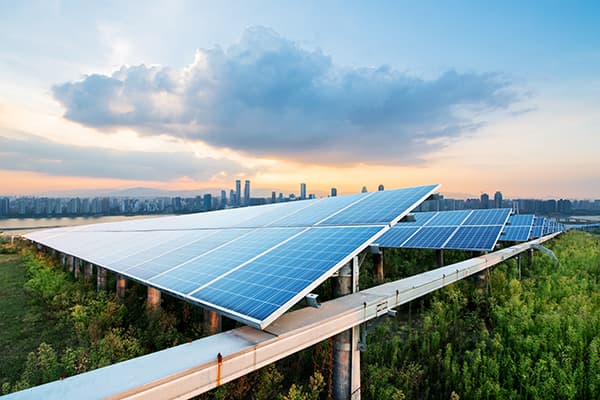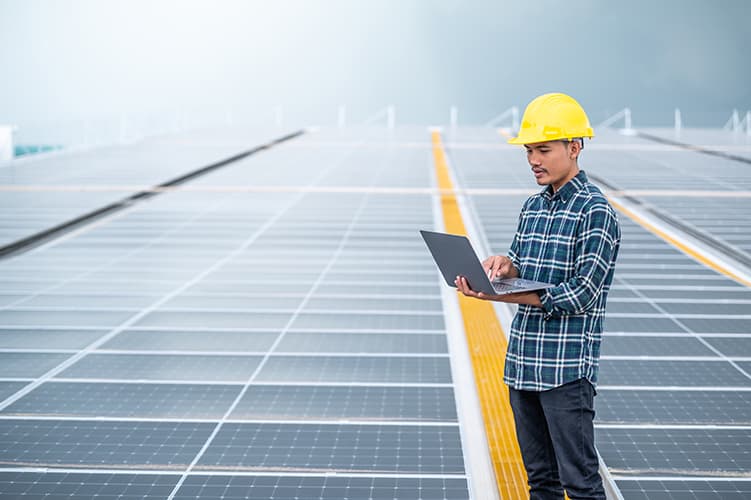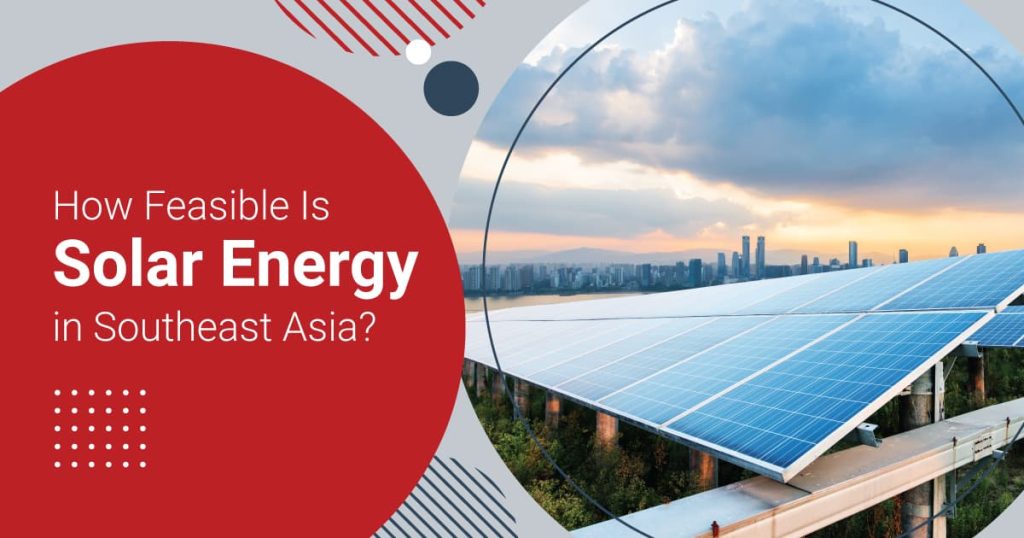 What is Solar Energy, and How is it Collected?
What is Solar Energy, and How is it Collected?
Solar energy is an alternative clean energy source that uses sunlight to create heat or electrical energy. It is also the cleanest type of renewable energy that has existed for a long time.
There are 2 common ways used to harness and collect solar energy:
- Concentrating solar power (CSP): Mirrors or lenses are used to reflect and focus sunlight. Heat energy is used to heat a fluid that runs a turbine and creates electrical energy. You can either store solar energy for later use or utilise it immediately with this method.
- Photovoltaic (PV) panels: PV cells, also known as solar cells, take in sunlight energy to generate an electrical charge and cause electricity to flow.
What Are the Benefits of Solar Energy?
There are many reasons why solar energy is such an attractive proposition, especially in Southeast Asia. The most obvious benefit is that it is a renewable resource – unlike fossil fuels, which are finite and will one day run out. Related Read: How Singapore Creates the Best Business Environment for a Sustainable Future » Solar energy is also very versatile, efficient, and cost-saving. For macro scenarios, it can be used to produce electricity on a large scale to power whole cities. It can also be harnessed for more micro uses, such as powering individual homes or small businesses. Some examples of solar technologies used for homes and businesses are:- Solar photovoltaics for electricity generation
- Passive solar design for living space heating and cooling
- Solar water heating
The Challenges of Solar Energy
Of course, solar energy has its challenges. The biggest obstacle to the widespread adoption of solar energy technologies is the upfront cost. While the long-term savings are significant, the initial investment can be off-putting for governments and individuals. Another challenge is that solar energy is intermittent – it can only be generated when the sun is shining. Batteries can store small amounts of solar energy, but this is still cost-prohibitive for wide-scale adoption. Related Read: Sustainability in Singapore: How it Spurs Sustainable Innovation » This means that in order to provide a constant and reliable supply of energy, solar power must be supplemented with other forms of generation, which are usually derived from fossil fuels. Finally, solar energy systems require a lot of space. Utility-scale solar plants refer to grid-connected power projects used to convert solar energy and generate enough power to meet a city’s or country’s needs. To pull it off, you would need a lot of land dedicated to solar panels. This is often impractical and can lead to environmental and food security concerns.The Current State of Solar Energy in Southeast Asia
As it stands, solar power has grown tremendously in Southeast Asia in recent years, with solar power capacity more than doubling between 2019 and 2020 alone. Singapore, for example, has seen its solar energy capacity nearly quadruple between 2015 and 2018, and it is still growing. Related Read: What is Singapore’s Role in Sustainable Financing for SEA? » In terms of overall solar output leaders, Thailand has historically had the largest installed capacity of solar power in the region. However, as of 2020, Vietnam is now the leader, becoming the world’s fourth-largest producer of solar energy, with an estimated 16,000 MW of capacity. Unfortunately, solar energy only makes up a small fraction of these countries’ energy mix. Even in trailblazer Vietnam, solar photovoltaics (PV) contributed under 6% of total electricity in 2021. Coal and oil still dominate, with hydropower being Vietnam’s biggest renewable energy source at 16%.Is Southeast Asia’s Climate Suitable for Solar Energy?
The climate in Southeast Asia is tropical and humid, with high temperatures and plenty of sunshine throughout the year. This makes it an ideal location for solar energy generation – but there are some caveats. As mentioned earlier, the intensity of solar radiation in Southeast Asia is not as high as in other parts of the world, such as the Middle East or North Africa. It means that solar panels will not be able to generate as much power as they would in these other regions. Additionally, parts of Southeast Asia, especially the Philippines, are prone to tropical storms and cyclones. These can cause damage to solar panels and other equipment, as well as disrupt the power grid. Finally, air pollution is a big problem in many Southeast Asian cities. This can reduce the amount of sunlight that reaches the ground and deposit harmful particles on solar panels, reducing their efficiency. Despite these challenges, Southeast Asia’s tropical climate means there is still great potential for solar energy generation in the region. Germany, for example, with a much less suitable climate, reached 9.9% of net generated electricity through solar in 2021. In terms of solar intensity, the most promising regions are in the Mekong region: Thailand, Myanmar, Cambodia, and southern Vietnam. Download Free eBook: A SEA of Opportunities: Understanding Southeast Asia »The Future of Solar Energy in Southeast Asia
 It is clear that most countries in Southeast Asia at least have the declared intention of shifting to solar. The region has set some ambitious goals, with Singapore aiming to meet 28% of its peak power demand with solar energy by 2030.
Vietnam aims to get a 50% share of wind and solar power by 2045. To make these lofty goals possible, the region must look at a few factors.
Firstly, the region will have to prepare for the intermittency and grid congestion impeding the utilisation of solar and wind generation.
Countries in Southeast Asia are targeting to add close to 50 GW of solar and wind capacity by 2030, which should take care of this issue.
Secondly, Southeast Asian countries will need to look beyond just capacity and supply reliability and flexibility.
Rather than having static goals in terms of energy mix, targets should be regularly updated for energy services that the power system should provide. This can help manage intermittency and better utilise solar, and the batteries it powers.
And finally, the cost of solar and wind energy needs to continue to come down, to make it more competitive with traditional sources of generation such as coal and gas.
The cost of utility-scale solar PV has fallen by 84% since 2010, and this trend needs to continue if Southeast Asia is to meet its ambitious goals.
There is no doubt that solar energy will play a big role in Southeast Asia’s future. With the right policies in place, the region has the potential to become a global leader in solar energy generation.
It is clear that most countries in Southeast Asia at least have the declared intention of shifting to solar. The region has set some ambitious goals, with Singapore aiming to meet 28% of its peak power demand with solar energy by 2030.
Vietnam aims to get a 50% share of wind and solar power by 2045. To make these lofty goals possible, the region must look at a few factors.
Firstly, the region will have to prepare for the intermittency and grid congestion impeding the utilisation of solar and wind generation.
Countries in Southeast Asia are targeting to add close to 50 GW of solar and wind capacity by 2030, which should take care of this issue.
Secondly, Southeast Asian countries will need to look beyond just capacity and supply reliability and flexibility.
Rather than having static goals in terms of energy mix, targets should be regularly updated for energy services that the power system should provide. This can help manage intermittency and better utilise solar, and the batteries it powers.
And finally, the cost of solar and wind energy needs to continue to come down, to make it more competitive with traditional sources of generation such as coal and gas.
The cost of utility-scale solar PV has fallen by 84% since 2010, and this trend needs to continue if Southeast Asia is to meet its ambitious goals.
There is no doubt that solar energy will play a big role in Southeast Asia’s future. With the right policies in place, the region has the potential to become a global leader in solar energy generation.
Contact our team
Posts not found!
FAQs
Is a solar business profitable?
- Yes, it is profitable. Solar energy has become a more doable option for both consumers and businesses with technological advancement and decreasing costs.
What are some lucrative solar energy business ideas?
- Some potential business ideas in the sector are starting a solar farm, distributing solar energy products, solar consultancy, manufacturing solar components, and repairing and maintaining solar products.
Where is the largest solar power plant in Southeast Asia?
- The Helios Solar Power Plant in Cadiz, Philippines, is regarded as the biggest solar facility in Southeast Asia.


